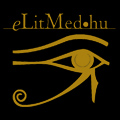The eLitMed.hu medical portal uses computer cookies for convenient operation. Detailed information can be found in the Cookie-policy.
LAM Extra for General Practicioners - 2012;4(04)
Content
[HYPERTENSION IN THE ELDERLY - CRITICAL REVIEW OF DIAGNOSTICTHERAPEUTIC GUIDELINES AND THEIR BACKGROUND]
[In the majority of old and very old hypertensive patients, the reduction of abnormally high blood pressure has been proved to provide a strategic defense of target organs. In patients younger than 80 years, both initial and target blood pressure (BP) values are similar to those of younger age groups. In those older than 80 years, a a systolic blood pressure level >160 mmHg is the threshold of indication for antihypertensive treatment and the therapeutic target value is<150 mmHg. Both values are evidence- based (HYVET). The latest ACCF/AHA guidelines (USA 2011) advise to achieve a BP below 140 mmHg if the use of one or two antihypertensive agents result in sufficient BP reduction. However, this strategy is not yet supported by unequivocal evidence regarding complications in target organs. It is not recommended to aim for target levels lower than the above values (especially the value defined by the ESH guidelines) even in elderly hypertensive patients at high cardiovascular risk, as the results of several studies suggest a J-curve effect. In multimorbid elderly patients it is highly important to adapt antihypertensive treatment to individual needs, rather than to use schematic approaches. The number and progression of comorbid diseases can greatly influence, in certain cases attenuate the aimed BP reduction. A similar medical decision should be made if the target BP level could only be achieved by the combination of multiple antihypertensive medications, which can remarkably impair quality of life in elderly patients. Among non-comorbid elderly patients with hypertension, there seems to be no convincing difference in the efficiency of target organ protection between antihypertensive treatments that have different target sites but can achieve similar target levels. However, the majority of elderly hypertensive patients have comorbidities with variable rates of progression. In those at even low cardiometabolic risk the use of beta-receptor blockers (BRB) and especially a combination of BRB+diuretic (DIU) is not recommended. The adequate therapeutic tactic includes the use of only moderate drug-doses and their early combination. This approach has been convincingly proved mainly with early combinations of RAS inhibitors+CCB-s and RAS inhibitors+small doses of DIU-s. It is very important to monitor the treated patients, as the BP and circulatory response to the same antihypertensive treatment can markedly change in elderly patients when either the enviromental conditions change or a new pathologic process develops and/or is treated. Strict control is also necessary because it occurs quite often that the earlier optimal compliance of elderly patients in taking antihypertensive medicines rapidly deteriorates. The efficiency of statins and acetylsalicylic acid decreases over 80 years of age, but this does not indicate that the previously efficient approach should be suspended.]
[LIVER DISEASES AND DIABETES MELLITUS]
[The liver plays a pivotal role in metabolism. Thus, it is hardly surprising that its acute and chronic diseases may be accompanied by multiple disturbances of the carbohydrate metabolism, and the development of diabetes mellitus - primarily of type 2 diabetes mellitus - may result in structural changes in the liver. This article overviews the main pathogenetic mechanisms of this bidirectional relationship, discusses special considerations of choosing the therapy and highlights special difficulties of the assessment of a diabetic metabolism.]
1.
Clinical Neuroscience
[Headache registry in Szeged: Experiences regarding to migraine patients]2.
Clinical Neuroscience
[The new target population of stroke awareness campaign: Kindergarten students ]3.
Clinical Neuroscience
Is there any difference in mortality rates of atrial fibrillation detected before or after ischemic stroke?4.
Clinical Neuroscience
Factors influencing the level of stigma in Parkinson’s disease in western Turkey5.
Clinical Neuroscience
[The effects of demographic and clinical factors on the severity of poststroke aphasia]1.
2.
Clinical Oncology
[Pancreatic cancer: ESMO Clinical Practice Guideline for diagnosis, treatment and follow-up]3.
Clinical Oncology
[Pharmacovigilance landscape – Lessons from the past and opportunities for future]4.
5.




